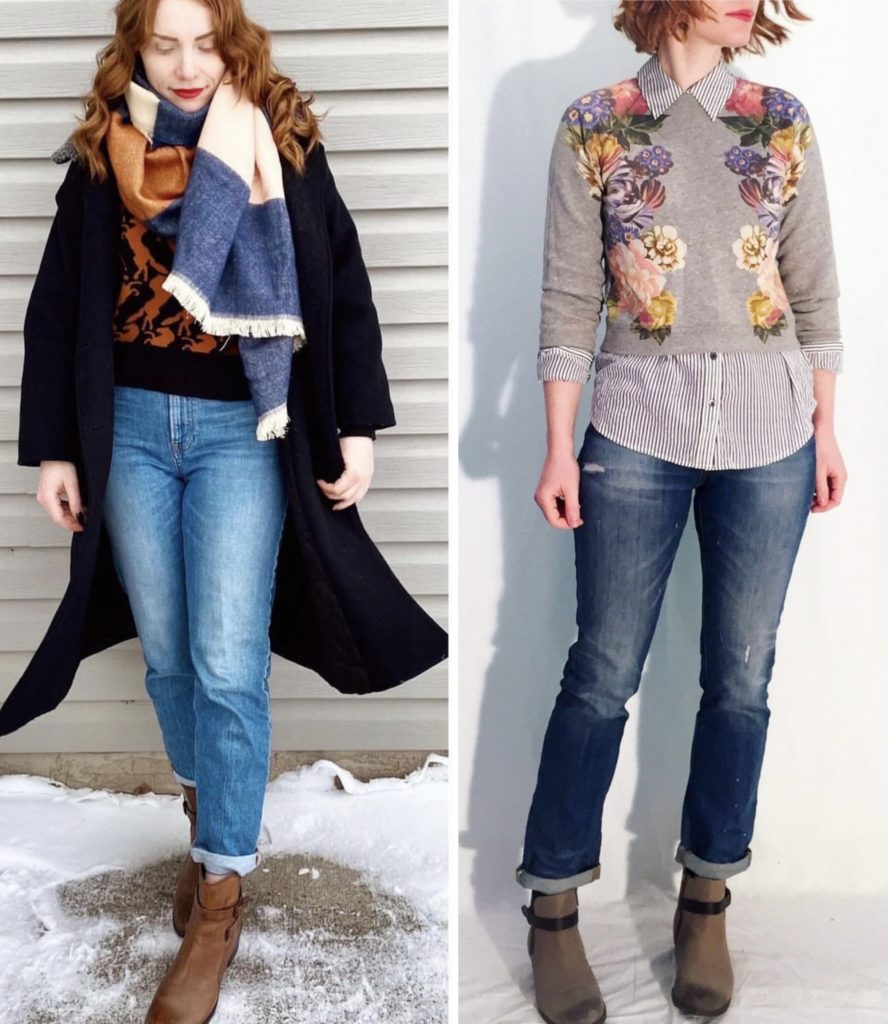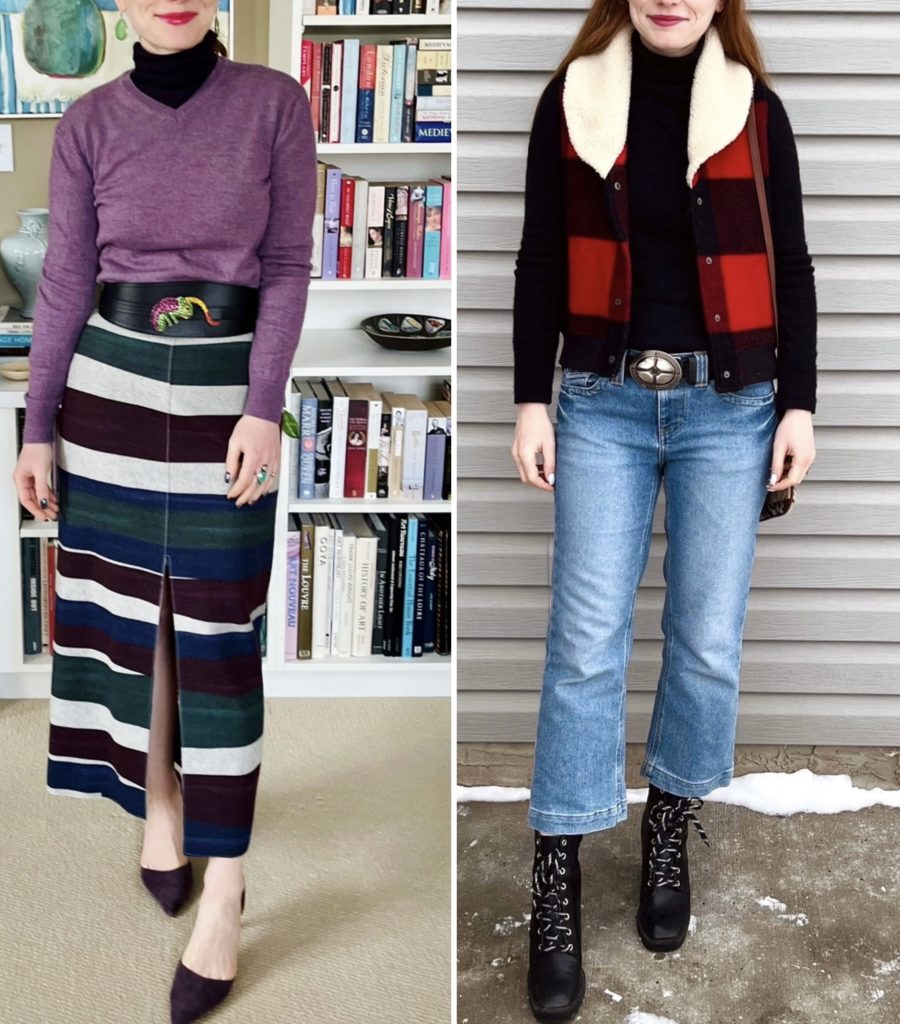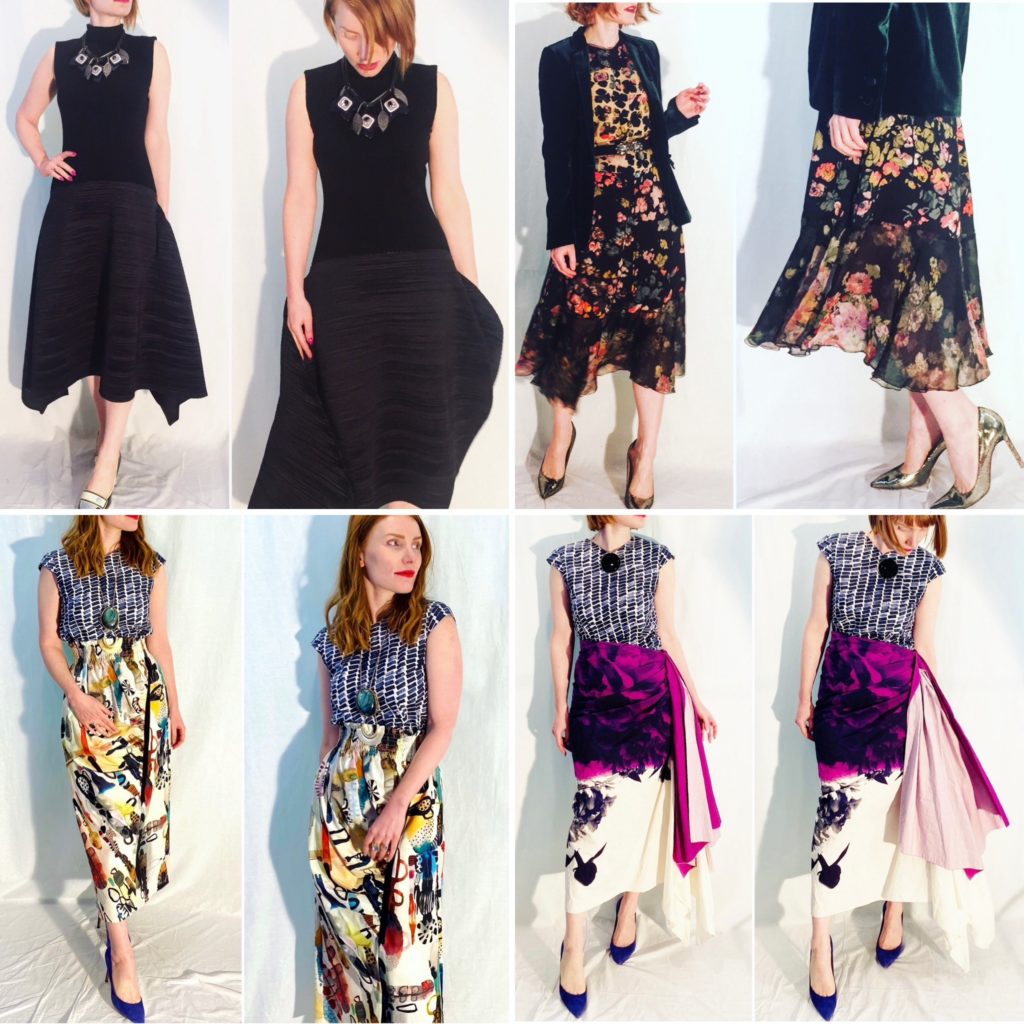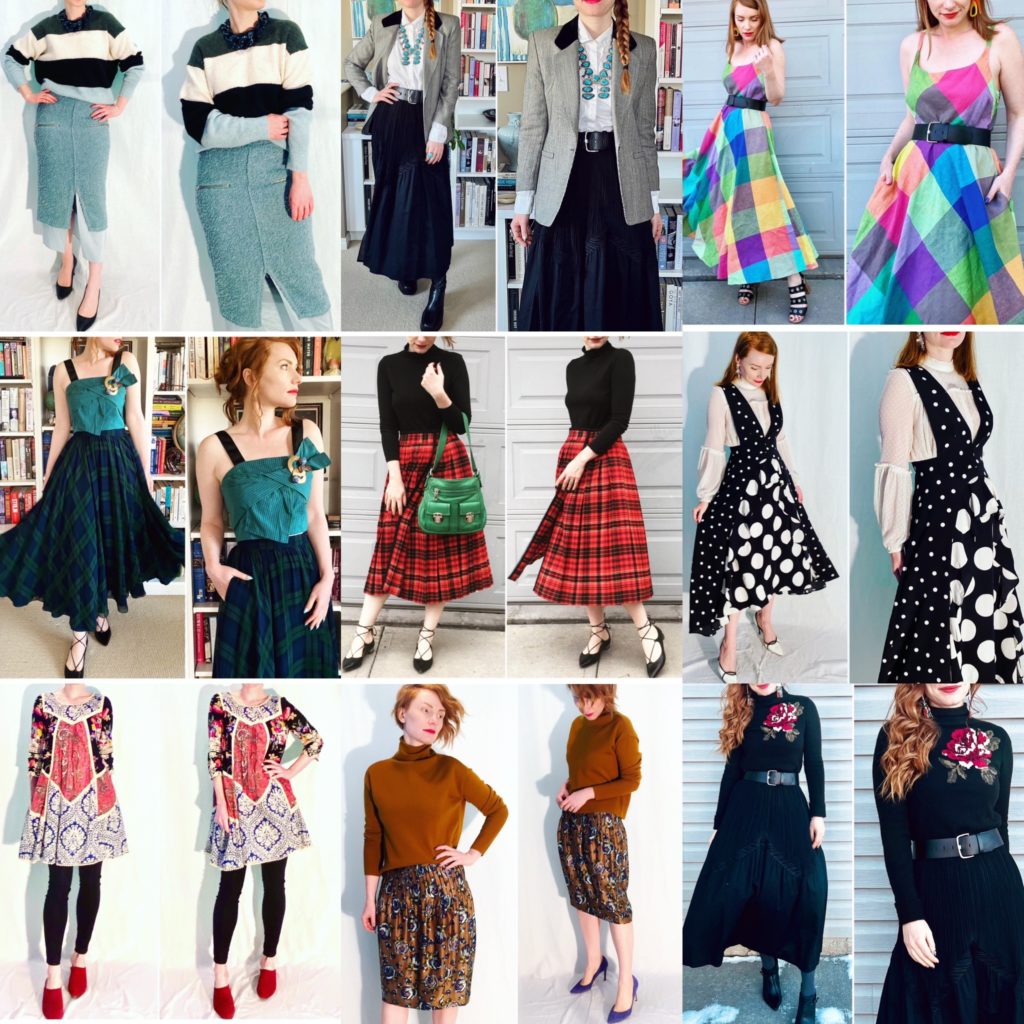You know what we haven’t talked about in a LONG time?
Wardrobe statistics!
This was a topic I was super into back in the 2010s (it feels weird saying that, but pre-2020 times are all starting to blend together in my mind) and fell out of the habit of chronicling on the blog at some point. But – surprise! – it’s something I’ve never stopped tracking, mostly out of habit. I haven’t done any analytics on this information in years though, so I thought it would be fun to have a look at that now and see what could be gleaned from it.
My wardrobe tracking system is a very, very, very basic Excel spreadsheet. I track the year of purchase, the price paid, the estimated retail price, and the number of times I wear each item. I’ve got everything organized by category of items to make the list easier to use and update. Items that are in my “archive” closet (i.e. not in current use but kept for sentimental reasons) have their own separate list. Once I get rid of an item, I delete it from my spreadsheet.
This means that my wardrobe tracking system is only a reflection of my current closet, not of my historical purchases. I keep a separate spreadsheet to track clothing purchases by year. I prefer to have them separate in order to make the wardrobe tracking sheet easier to navigate; there is a lot of turnover in my closet, and I want to be able to easily see what’s actually there now, versus all the stuff that’s been in there over the years. [Note: all of the stats below include clothing only, not shoes, bags or other accessories.]
Speaking of turnover, here are the stats:
- 5% of the wardrobe was purchased pre-2018
- 21% was purchased between 2018 and 2020
- 74% was purchased between 2021 and now
This doesn’t surprise me, to be honest. Fashion is one of my hobbies and I love to experiment, which is possible thanks to thrifting. The vast majority of things I discard from my closet are still in great shape and are simply pieces that I don’t love wearing anymore. I end up selling, swapping, or donating them, to make sure that they stay in circulation for as long as possible. I have been working on being more selective with the things I buy – and I think I have made lots of progress since my early days as a thrifter – but the reality is that there will ALWAYS be new (to me) pretty things that will catch my eye and spark joy. My goal now is to make sure that any pieces I add to my closet are 100% “HELL YES” – not just “this has potential” or “I could see me wearing this”. I can see me wearing a lot of things; I only want to buy things I’m hella excited to wear.
More than 90% of my wardrobe is secondhand. This is reflected in the following stats:
- Average purchase price: $22/item
- Average estimated retail price: $225/item
In my experience, thrifting prices used to be around 5-7% of estimated retail cost. In the past few years, that’s inched up to 10-15% on average. In contrast, consignment and Poshmark have always had higher percentages – 25% and up on average. Because I have been using Poshmark since 2020, my clothing purchase costs have definitely increased during the past 3 years as compared to the preceding 3 years. Obviously, Poshmark is nowhere near as a good a (financial) deal as thrifting, but I do like using it to find things that are unique or hard-to-thrift, and still a good bargain overall.
What about value though? Here are some cost-per-wear stats:

- My most worn item is the Oak & Fort cocoon coat that has been my go-to winter coat for the past few years (since retiring my beloved MaxMara camel coat). I bought it in 2020, paid $33 for it at the thrift, and have worn it over 400 times. I have started to look for a replacement on a sort of informal basis; I think I’ll get one more winter out of this coat, but thrifting can take a while to deliver the goods, so it’s a good idea to start a new search early.
- The next few items on the most-worn list are also coats (see a trend?). The most worn non-coat item is my Madewell jeans. Although this is a pair I haven’t worn a lot lately, I’ve held on to it for now because it still fits. I bought these in 2017 at consignment for $26 and have worn them 47 times.
In general, because I have a large wardrobe, most of my items (even the older ones) don’t get a high amount of wears. However, there are certain staples that do. Here’s an example of 2 pieces I bought only last year:

- Babaton black turtleneck (used as a base layer) purchased in 2022 for $8 (thrift) and worn 23 times.
- Tommy Hilfiger kick flare jeans purchased in 2022 for $10 and worn 27 times.
In both cases, the cost-per-wear is well under $1.
Wondering how my most expensive pieces stack up? I got you:

- Issey Miyake dress purchased in 2019 for $580 (consignment) and worn 5 times [no regrets though, it’s a “forever” piece for me]
- Dries Van Noten dress purchased in 2018 for $300 (eBay) and worn 8 times
- Rachel Comey skirt purchased in 2021 for $210 (Poshmark) and worn 5 times
- Dries Van Noten skirt purchased in 2020 for $190 (Poshmark) and worn 6 times
- Burberry trench purchased in 2017 for $180 (consignment) and worn 47 times
And what about some of my favourite pieces?

- Acne skirt purchased in 2020 for $80 (Poshmark) and worn 7 times
- Issey Miyake skirt purchased in 2020 for $10 (thrift) and worn 15 times
- Liz Claiborne dress purchased in 2021 for $20 (thrift) and worn 7 times
- Ralph Lauren skirt purchased in 2019 for $7 (thrift) and worn 13 times
- Saint Laurent skirt purchased in 2019 for $13 (thrift) and worn 9 times
- Topshop dress purchased in 2021 for $64 (eBay) and worn 8 times
- Vanessa Virginia dress purchased in 2016 for $17 (thrift) and worn 14 times
- Wilfred sweater purchased in 2018 for $140 (retail) and worn 17 times
- Reitmans sweater purchased in 2023 for $9 (thrift) and worn 6 times
Overall, there were no surprises (for me) in these stats, but I still found it a fun exercise. On the whole, consistent with my cost-per-wear analysis, I do try to limit how much I spend on “statement pieces” because I know that I won’t wear even my favourite ones that much. I like variety too much. Ironically, I still find it easier to justify spending more money on those statement favourites than I do on staples like coats or jeans (which I wear a LOT more). It’s a habit I haven’t been able to break, but I’m working on it. Seeing these stats helps to reinforce the message.
If you also do wardrobe tracking, I would love to hear your thoughts on your experiences with it. What have you learned? Does it help you to make decisions about clothing purchases? What are some of the biggest surprises or takeaways from your experiences?

The financial analyst in me loves this post. 🙂 And it’s timely for me — I recently found myself wondering how many times I’d worn a beloved shirt and what the cost/wear is. I thrifted it for probably $7, and have likely worn it 1/week for 5 years. I’m curious how you know exactly how many times you’ve worn an outfit?
I update my spreadsheet a few times a month to add new items and delete ones I’ve purged. That’s when I also update my wears. I can refer to my IG to remember what I wore and just manually +1 for each piece. It’s not 100% accurate, tbh, because I’m sure that I forget to update some things from time to time, but it’s in the ballpark.
I love a good stats post! I’ve been meaning to write about my wardrobe tracking too, but I’m the same as you in that I keep two spreadsheets: one that tracks purchases, and another that’s a reflection of what’s in my wardrobe. When I remove an item from closet, I move it to another tab in the wardrobe spreadsheet. I don’t track wears, but seeing everything listed out does help me make decisions about what to buy. I can see what gaps there are or if I already have enough of something.
The other thing I do, and forgot to mention, is that on my purchase spreadsheet I do update things that I end up getting rid of. So I can see what I bought in a year and how much was “good buys” and how much was “not so good buys”. And see trends in the latter category. It helps me keep improving on my impulse buying 😅
I do that too!